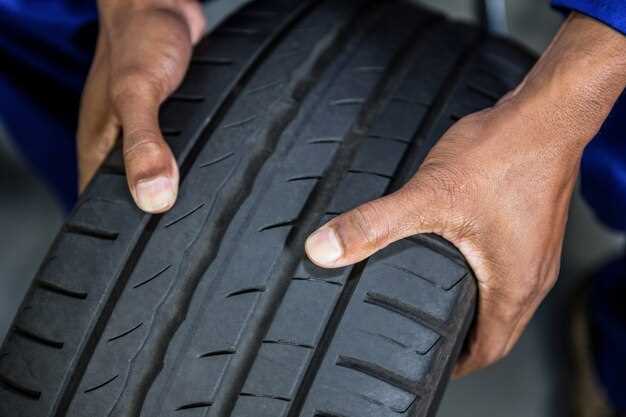
How to Choose the Best Track Tires
- George Harris
- 0
- Posted on

When it comes to achieving peak performance on the track, the choice of tires becomes a pivotal factor. Track tires play a crucial role in enhancing grip, handling, and overall speed, making their selection a critical aspect for any serious racer or performance enthusiast. Understanding the nuances of tire compounds, tread designs, and sizes is essential for maximizing your vehicle’s capabilities on the circuit.
One of the first considerations in choosing track tires is the type of surface you’ll be racing on. Different tracks can have varying levels of grip and surface types, which can influence tire performance. It’s important to match your tire selection to the specific demands of the track to ensure that you can extract the maximum potential from your vehicle.
Additionally, the climate and weather conditions should not be overlooked. Tires are engineered to perform optimally in certain temperatures and conditions. For instance, a tire designed for dry conditions may struggle in wet weather, and vice versa. Choosing the right tire for the prevailing weather conditions can mean the difference between victory and defeat.
In the quest for optimal performance, understanding tire tread patterns and their effects on handling characteristics is also vital. Track tires often feature specialized tread designs aimed at providing superior traction while minimizing rolling resistance. By comprehending these elements, racers can make informed decisions that align with their driving style and requirements.
Understanding Tire Types and Their Impact on Handling

The performance of a vehicle is significantly influenced by the type of tires installed. Different types of tires cater to various driving conditions and purposes, affecting aspects such as grip, responsiveness, and overall handling. In this context, it’s important to understand how each tire type contributes to vehicle dynamics.
There are primarily three categories of tires: street tires, track tires, and all-season tires. Street tires, designed for everyday driving, prioritize comfort, longevity, and noise reduction. They often feature tread patterns that excel in wet conditions but may compromise grip on dry surfaces. This can lead to longer braking distances and less precise cornering compared to specialized tires.
Track tires, in contrast, focus on maximizing traction under racing conditions. They are constructed with softer rubber compounds that provide superior grip, especially in dry conditions. The absence of tread patterns enhances contact with the surface, allowing for more agile handling and lateral stability. However, this comes at the cost of reduced durability and grip in wet conditions, making them unsuitable for everyday use.
All-season tires aim to strike a balance between performance and versatility. They incorporate moderate tread patterns to handle a variety of conditions, offering decent grip in both dry and wet environments. While they are convenient for general use, they do not match the handling precision and responsiveness offered by dedicated track tires.
In terms of handling, tire width plays a crucial role. Wider tires provide a larger contact patch, enhancing grip and allowing for sharper turns. However, they may also lead to increased rolling resistance, which can affect acceleration and braking. Choosing the right width is essential for optimizing performance based on the vehicle’s specifications and the intended driving conditions.
The tire sidewall construction also impacts handling characteristics. Stiffer sidewalls improve responsiveness and reduce flex during cornering, providing better feedback to the driver. Conversely, tires with softer sidewalls enhance comfort but may compromise handling precision, especially during aggressive maneuvers.
In summary, understanding the different types of tires and their specific characteristics is vital for achieving optimal vehicle performance. Selection should be based on driving style, typical conditions, and the desired balance between grip, comfort, and durability. Making an informed choice can significantly enhance handling dynamics and overall driving experience.
Evaluating Tread Patterns for Different Track Conditions

Understanding the impact of tread patterns is essential for optimizing tire performance on various track surfaces. Different tread designs affect grip, handling, and durability, making them crucial for achieving the best results in motorsport.
On dry tracks, slick tires are often the preferred choice. These tires feature a smooth surface without any grooves, maximizing the contact area with the asphalt. This design enhances grip during acceleration and cornering, allowing for faster lap times. It’s important to ensure that the tires can maintain performance levels without overheating, as slicks can quickly lose effectiveness if tire temperatures exceed optimal ranges.
In contrast, wet tracks require tires with specialized tread patterns designed to channel water away from the contact patch. These tires typically have deeper grooves and various siping for improved water displacement and aquaplaning resistance. The primary goal with wet tires is to maintain traction and prevent loss of control, making it crucial to select a tread pattern that aligns with prevailing weather conditions.
Mixed surfaces, such as those found on rally tracks, demand versatility from tread patterns. Tires for these environments often combine aspects of both slick and wet designs, featuring moderate grooves to adapt to varying conditions. These tires need to offer a balance between grip on dry sections and adequate water channeling when the surface is wet, allowing drivers to remain competitive regardless of changes in track status.
Additionally, tire wear characteristics influenced by tread patterns must be considered. Softer compounds with aggressive tread designs may offer excellent grip initially but can degrade rapidly under high-performance conditions. Conversely, harder compounds with less aggressive patterns may provide longevity but sacrifice some traction. Evaluating the right balance of tread pattern and compound is essential for ensuring consistent performance throughout a race.
In summary, selecting the appropriate tread pattern based on track conditions is paramount for optimal tire performance. Considerations must include the nature of the surface, weather conditions, and the trade-offs between grip and tire longevity. By carefully assessing these factors, racers can enhance their performance and achieve their competitive objectives.
Selecting the Right Tire Compound for Your Driving Style
Choosing the right tire compound significantly influences your vehicle’s performance on the track. Different compounds are designed to cater to various driving styles and conditions. Understanding these distinctions is crucial for maximizing grip and achieving optimal lap times.
Here are key considerations when selecting a tire compound:
- Driving Style:
- Aggressive Driving: If you favor hard braking and fast cornering, opt for a softer compound. These tires offer superior grip but may wear out quicker.
- Consistent Pace: For a more controlled driving style with smooth inputs, a medium compound can provide a balance between grip and longevity.
- Conservative Approach: If you prefer a slower pace and prioritize tire durability, harder compounds will deliver extended life and stability.
- Track Conditions:
- Dry Conditions: Soft compounds perform optimally on dry asphalt, providing maximum grip and performance.
- Wet Conditions: Consider tires designed for wet traction, typically utilizing harder compounds that channel water effectively to prevent hydroplaning.
- Temperature Variations: Certain compounds react differently to temperature changes. Ensure the chosen compound matches the expected operating temperature for optimal performance.
- Tire Wear:
- Softer Compounds: Offer higher grip but wear faster, necessitating more frequent replacements.
- Harder Compounds: Provide longer durability at the expense of grip, making them suitable for endurance racing.
- Feedback and Communication:
- Feel and Feedback: Softer compounds often provide better feedback through the steering wheel, enhancing driver confidence. Ensure you select a compound that offers the desired level of communication.
- Consistency: Look for compounds that maintain performance over laps, especially during races where tire degradation can influence overall performance.
Ultimately, testing different compounds suited to your driving style and track conditions is essential. Gather feedback from each session to refine your selection, ensuring that your tires enhance your overall racing experience.
